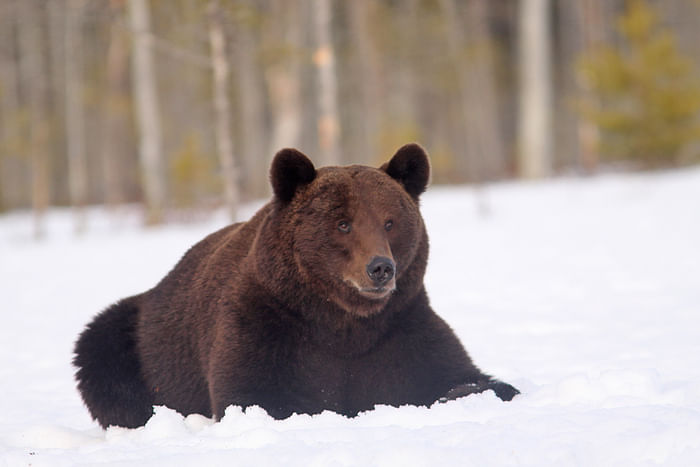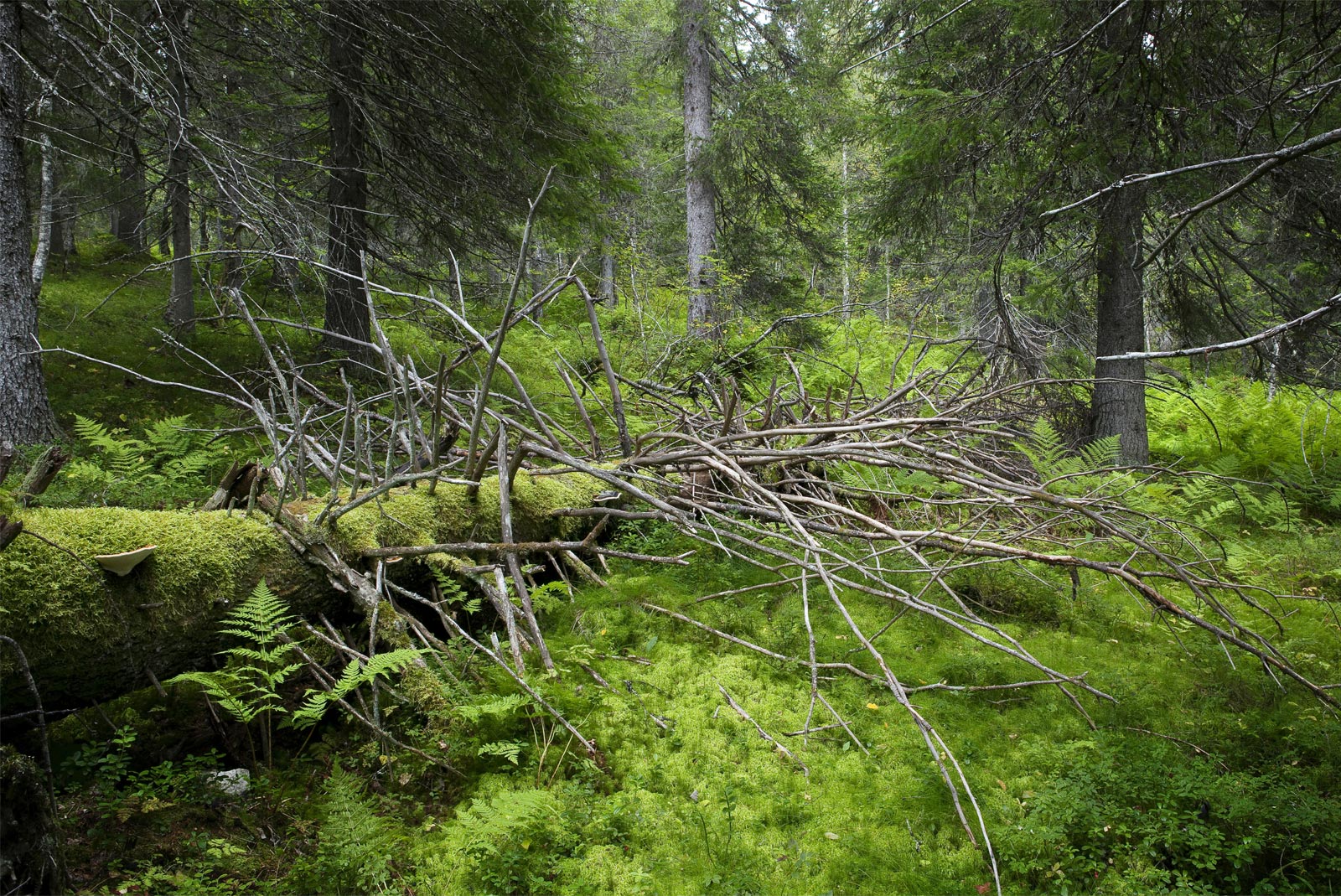Programme description
The first bears of the year arrive to the hide area usually at the end of March up until the first week of April at the latest. Big male bears wake up first, whose arrival time depends on the spring conditions and the distance of it’s winter nest from the hide area. In the spring, bears are thinner and the their skin may be a bit saggy, usually referred to as ”a couple of sizes too big”. The day timetables of April have been adjusted to suit the change in day length, as bears may arrive earlier and this way daylight hours can be better utilised. The conditions of spring may vary from year to year, such as temperature, amount of snow and its melting rate. Spring generally progresses in the way explained in the following sections. In April springs progression occurs quickly and the landscape may change rapidly. In the beginning of the month there may be a lot of snow and by the end there may only be a little left. Changes can be very quick with fast melting of snow occuring if there is warm weather and rain. Great changes in conditions may even happen in one week when both light intensity and warmth increase. As spring progresses, the daylength increases several minutes every day. Snow reflects light efficiently so photography is not just limited to the hours of daylight available. It is also possible to photograph for longer during a full moon, when the sky is clear it is possible to photograph through the night. In addition to bears, wolverine actively move within the hide area and it is possible to photograph the wolverine throughout the year. Migratory birds arrive by the end of April, however some species may arrive during mid-April.
Detailed programme
Day 1. Info of bears, bear photographing and hides
Info start in Bear Centre auditorium.
Timetable
April
at 4pm Info, after that a short walk to the hides (500-900 meters).
at 8am Return from the hides.

Included in this programme
Snack's package for trip
Bear night includes snacks that contains food, drink and utensils. Snack-packs contain thermos flasks of hot water that can be mixed with tea or coffee. Snacks are packed in backpacks that everyone carries themselves to the hide and back.
Personal snacks and drinks are allowed if you wish, only alcohol is forbidden. When taking your own extra snacks, simple snacks are recommended and should be taken into account that the packaging doesn’t rustle as this may scare bears.
You will need
Temperatures
In the beginning of April temperatures at night are between -5 and -20 and by day are between -5 and +5 degrees. In the end of April temperatures at night are between -5 and +5 and by day between 0 and +5 degrees.
Light
In mid-April the sun sets in the evening at around 8.40 and rises about 5.30 am.
Clothing and equipment
There are winter sleeping bags provided in the hides. It is recommended to sit in the sleeping bag placed on the chair. This will help you remain warm and be able to photograph comfortably at the same time. Because the weather is cold it is important to bring warm clothing including a warm hat, warm gloves, woolen socks and moisture-resistant footwear.
Good to know
Notice; we cannot guarantee to see bears depend of possibilities is 90-99%.
Please note that is not allowed to smoke or drink alcohol at the hide.
Tips for photographing in snow and cold
-During snowfall a small air blower and lens cloth can be used to remove snowflakes and water residue from the lens.
-When temperature is below zero the humidity of your breath may fog up the camera viewfinder. Try to breathe away from the camera, or use other means to prevent misting of the lens such as placing a scarf in front of your mouth.
- Cold weather drains batteries at a faster rate, so keep the batteries warm. It is important to bring spare batteries to the hide.
- When returning from the hides, the humidity of air may condense in the camera when brought indoors. It is strongly advised to bring the camera indoors for example inside of a closed bag, wrapped coat or airless plastic bag. This way the inside of the bag allows the camera to warm indoors for 1-2 hours. The memory card can be removed outdoors.








Ask for more information
BEAR CENTRE


